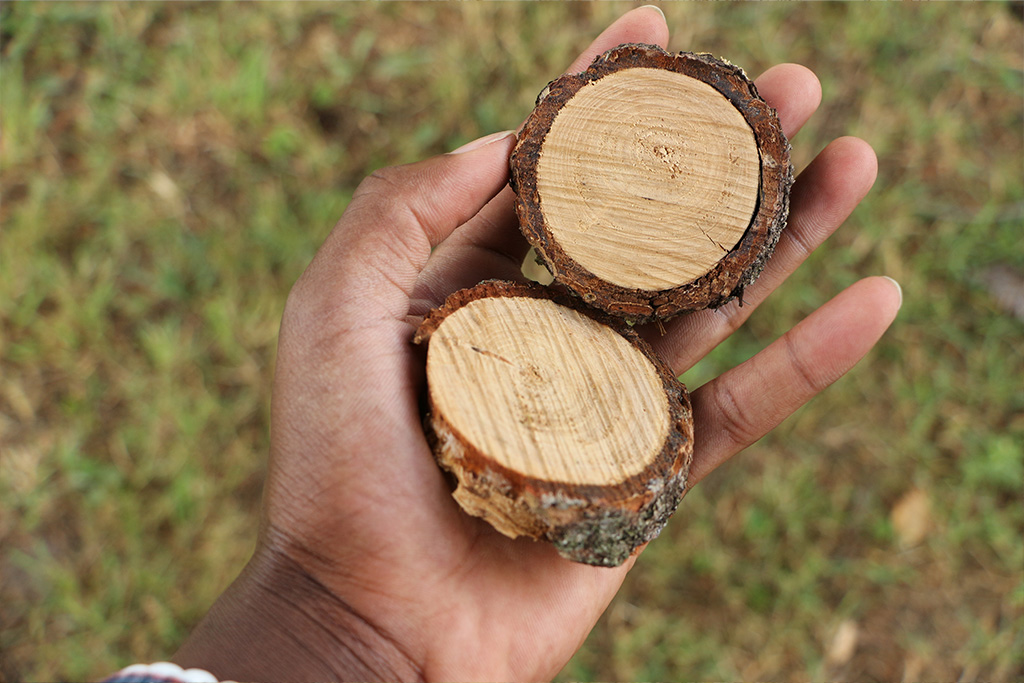As the year comes to an end, it’s important to look out for your personal health and the health of the environment. This issue of Start Healthy is here to help you make the most of this month with a look at the health benefits of music, a list of fresh produce that is in season, a guide to keep your skin healthy during the cooler months, and tips for recycling your authentic tree after the holidays.
It's no secret that music plays an important part in the human experience. Songs can stick with us for days and even years, transporting us to a specific moment in our lives. But music also has many healing powers, so be sure to read the article on the health benefits of music, and check out the enclosed checklist of holiday songs.
Though it might seem like a challenge to eat healthy this time of year, there are a variety of fruits and vegetables in season. Inside you’ll find a list of the best produce to buy on your next trip to the local market or grocery store.
The winter months often bring cooler weather and drier air, which can be detrimental to the health of your skin. It’s important that you adjust your skin-care routine to keep your skin from feeling too dry and irritated. This issue offers tips for taking better care of your skin during the winter.
Real trees are a beloved part of holiday decor. They bring a wonderful scent into your home, and, as a bonus, they are 100 percent recyclable. If you’re one of the many people who purchased this type of tree, make sure you read the article on how you can recycle it once the holiday season comes to an end.
Here’s to a happy, healthy December! As always, it’s a pleasure to send you this magazine.
Have you ever caught yourself humming a tune without even realizing it? Do certain songs remind you of a particular time or person? Is music the soundtrack of your workouts?
The aforementioned examples show that music holds a unique place in our lives. In fact, you could argue that it’s in our DNA as humans. The earliest evidence for musical instruments is thought to date back 40,000 years, and some experts theorize that Stonehenge was essentially a large sound stage. In the twenty-first century, our love of music is more pronounced than ever: over 500 million people now subscribe to a music-streaming service.
This seems to especially hold true during the holiday season, when a nonstop rotation of jolly songs fills our hearts with joy for weeks on end. But why does holiday music elicit such strong feelings for so many? To discover the answers, one first must break down the benefits of music itself—any time of the year.

You’ve certainly noticed that doctor offices often have peaceful music playing in the waiting room and that some facilities provide music to listen to during your visit. That’s not a coincidence: the medical industry understands that one of the many medicinal benefits of music is to help relieve stress in what can be an otherwise anxiety-filled situation.
But that’s far from the only one. It’s no surprise, then, that research repeatedly reveals the power of music. Among the many health benefits include:
There’s clearly a multitude of reasons why we love listening to music—even if we don’t always consciously understand why. But there are many other benefits to performing the music as well.

Singing involves more than exercising your vocal cords—it can be a full-body workout. Singing lessons often include learning breathing techniques to control inhaling and exhaling while belting out a tune. In addition, other parts of the body besides the nose, mouth, and vocal cords are in play when changing or holding a note, including tensing muscles in the torso and contorting one’s posture.
Of course, people play and dance to music as well. For example, it’s thought that intense drummers can burn upward of 600 calories per hour on average. And dancing to music is a well-known workout, even inspiring several popular video games; the activity can burn approximately 400 to 500 calories per hour for a 170-pound person. Dancing the night away has never sounded so healthy.

Perhaps the best part about music is that it welcomes us to form social bonds. People often become friends because they share similar musical tastes, for example. In addition, going to a concert and singing along with thousands of other fans—most of whom are strangers—is a rush like no other because scores of voices literally become one.
Similarly, in religious services, music can evoke an uplifting, joy-filled feeling associated with the service or time of year—which brings us back to the music of the holiday season.

Holiday music seems like it’s been with us forever because … well, for many of us, it has. Sacred holiday songs are thought to date back to church hymns of the Middle Ages, and carols followed a few centuries later. In the twenty-first century, choirs are resurging in popularity, thanks in part to flash mobs and shows like America’s Got Talent.
So music matters perhaps more than ever during the holiday season, for a few important reasons.
Connections to the season
With most music, you’ll listen to it all year. In contrast, this type is only associated with the time of year it was created for, which tends to make us treasure it and wholly embrace it when it returns, like greeting an old friend. (Just try to avoid Christmas Creep—experiencing the season so early and so often, it brings you down.)
Connections to one another
Holiday music often acts as a common nostalgic thread between family members who listen to it together every year—and between generations. As an example, I only know of Bing Crosby and his holiday tunes from the 1940s because my parents heard them in their homes when they were growing up and then played them for my brothers and me. And I’ve passed it along: now my kids look forward to hearing Bing’s baritone every December. That’s four generations and over eighty years, bonded over holiday music.
Connections to positivity
Holiday music is always there to lift you up or remind you of what’s important, perhaps no better heard than in the best-selling Christmas song of all time, “White Christmas.” In addition, much like holiday movies, there’s almost always a feel-good, happy ending to these songs—and what else in life can we say that about?
The power of music is undeniable. It improves our health and well-being, teaches us, helps us through difficult times, and makes us smile. It evokes memories of good times and loved ones and togetherness, which makes it a treasure every time the holiday season returns.
Download the Holiday Songs Checklist PDF
Winter may seem like the best time to pop open your frozen or canned goods. However, there’s a surprising bounty of seasonal foods that reach their flavorful, healthy peak in the middle of winter! Use this shopping guide to help you find fresh ingredients at your local market or grocery store for your winter comfort foods.

Have you ever wondered why butternut squash and pumpkin pie are staples of holiday dinner? Varieties of squash like corn, sugar pumpkin, spaghetti, and butternut are in season during winter. Notable for their creamy texture when roasted to perfection and slightly sweet, versatile flavor, all types of winter squash are essential for winter cooking.
If you’re unsure which type to buy, squashes with yellow to orange flesh are considered winter squash, while green and white-fleshed varieties are summer squash. These summer assortments may be in stock at your local grocery store, but they may also be artificially ripened and aren’t at their most flavorful in winter.

You might be thinking, “Doesn’t fungus grow year-round?” Of course it does, but edible mushrooms are actually at their tastiest in the winter.
Though they’re not considered fruits or vegetables, mushrooms are so nutrient packed, they might as well be. Plus, your options range from small, delicate mushrooms that make great side dishes to dense and meaty mushrooms that make for a wholesome main course. However, keep in mind that you should never forage for mushrooms in the wild. It takes years of education and experience to differentiate a safe, edible mushroom from a poisonous one that can make you very ill.
Seasonal chanterelle mushrooms, which thrive in warmer regions of the US, are light and packed with flavor. Widely available wood ear mushrooms, meanwhile, have a subtle flavor that takes well to delicious sauces, dressings, and broths. This winter, make mushrooms part of your recipe rotation.

Some of the tastiest, most aromatic vegetables are at their ripest and best in wintertime. These include pantry staples like carrots, sweet potatoes, russet potatoes, and onions. Turnips, beets, and rutabaga also have the most flavor to offer in the winter.
Root vegetables are culinary favorites due to their versatility. Use them to add full flavor to a stew or baked turkey, or braise these vegetables to make them the star of a dish. There are virtually endless ways to cook with root vegetables, so foodies have quite the surplus to enjoy in winter.

Surprisingly, winter is the best time to enjoy citrus fruits like lemons, oranges, grapefruits, and limes. Many people associate citrus with beaches and other sunny, summery locales—and they do certainly grow best in tropical climates. However, citrus is at its most delicious and nutritious during cool, short days in these climates.
It’s easy to see why citrus fruits are so popular for all ages. Varieties like tangerines are super sweet and, thanks to their ample nutrients, make for guilt-free snacks. However, citrus is also a staple of winter cocktails like an orangey mulled wine or a bright lemon spritz, and grapefruit adds a pop of sharp flavor to savory dishes and desserts. Plus, a squirt of lemon or lime is essential when preparing seafood recipes.

They may not be your favorite vegetables to sit back and munch on, but leafy greens are some of the most nutritious foods on earth. Fight the winter blues with the vitamins, antioxidants, and fiber your body craves. Explore some tasty recipe ideas to make green vegetables like spinach, cabbage, bitter greens, and kale as enjoyable as they are beneficial. Why not try this arugula-based salad or this winter greens one? There are more ways than you might expect to make leafy greens delicious.

Broccoli, cauliflower, brussels sprouts, and other cruciferous vegetables may not be everyone’s favorites, but these fibrous, nutritious foods are ready for eating this season. Cruciferous vegetables are filling and can be incredibly tasty when prepared with finesse.
Skip the boring crudités plate, and cook broccoli and cauliflower into creamy soups or garlicky stir-frys. Or try some new recipe ideas like this one for Roasted Brussels Sprouts with Honey Miso Glaze and Cilantro. The secret to making cruciferous veggies tastier is to roast or sauté them for a crisp, satisfying texture.
There’s even more seasonal winter produce to try, like cranberries, apples, and dates, depending on where you live. For more information, visit the Farmer’s Almanac and select your region to get a detailed list of local produce to enjoy in your recipes all winter long!
Download the Seasonal Squashes PDF
Winter is filled with holiday celebrations, time spent with loved ones, and cooler weather throughout most of the country. But while the winter temps may provide a nice break from the heat, the sometimes drastic and sudden changes in humidity and temperature can be detrimental to your skin. It’s important, then, that you make a few adjustments to your skin-care routine to keep your skin healthy all winter long.

When the seasons change, the temperature and humidity in the atmosphere rise or fall. We can often clearly see how this increase or decrease in temperature and humidity affects the environment, but it also has an impact on the health of your skin. For example, warmer weather with higher humidity can lead to oilier skin than normal, and cooler weather with lower humidity can make your skin drier than usual. This cool, dry air in the winter months is what causes dry, irritated, and inflamed skin that can then flake and crack. So to keep your skin from feeling irritated all winter long, give these tips a try.
It’s always important to regularly wash your face and any facial hair since it will remove toxins that build up and cause excess irritation and breakouts. However, in the winter, you’ll want to avoid cleansers with harsh, drying chemicals such as benzoyl peroxide, alcohol, sulfates, and fragrances. Instead, look for cleansers with hyaluronic acid, ceramides, and salicylic acid (though salicylic acid can be irritating in large quantities, so use it in moderation). Cleansers with these ingredients will gently clean the skin and keep it healthy without drying it out excessively. However, everyone’s skin is different, so ask your dermatologist to help you find the best winter-friendly cleanser for you.

Exfoliation removes dead skin cells from the surface of the skin, helping your face to appear smooth and clear. But, even though you might think you need more exfoliation in the colder months, you’ll actually want to scale back on it since you run the risk of overexfoliating, which can cause irritation and redness.
There are two main types of exfoliants: physical and chemical. With physical exfoliation, you use an abrasive substance to physically remove the dead skin cells from your face and body. On the other hand, chemical exfoliants contain an acid, such as glycolic or salicylic acid, that removes any dead skin cells. Because this process isn’t abrasive, it’s the safer option for exfoliating your skin in the winter. For dry skin, dermatologists recommend exfoliating a maximum of two times a week to help remove the outer layer of dried-out skin and keep dead skin cells from building up and clogging pores.

It’s important to keep your skin hydrated throughout the year, but because the drier and colder weather can strip your skin of its much-needed moisture, you might have to work a little harder to keep it hydrated in the winter months. Hydration begins from the inside out, so your first step to combating dry skin is to drink plenty of water throughout the day.
Beyond your internal hydration, your skin might require more moisturizing, so you’ll want to reach for cream moisturizers in the winter. Aquaphor is a holy grail for your face, lips, hands, elbows, and anywhere else you might need additional hydration in the colder months. It is dermatologist recommended for dry skin and contains healing ingredients like glycerin, which locks moisture in, and bisabolol, which helps soothe skin. As the last step to keep your skin moisturized, you’ll need to apply beard oil to any facial hair to help properly hydrate both your hair and the skin beneath it.
With the weather being colder, it makes sense that you may want to raise the inside temperature and take hotter showers. However, that’s a surefire way to dry your skin out more. When you wash your face or body with hot water, you’re stripping it of its essential oils and moisture. This can damage the surface of your skin, which in turn can lead to increased inflammation and exacerbate certain skin conditions. It’s instead recommended that you use lukewarm water in the winter to clean your skin so that you don’t cause any more harm to it.
With just a few simple adjustments to your daily skin-care routine, you can keep your skin looking healthy all winter long.
Decorating for the holidays is a fun way of getting into the spirit of the season, but once the holidays end, the teardown begins. If you’re one of the many people who buy authentic trees every December, you’ll want to ensure you further reduce your carbon footprint by properly recycling yours. There are multiple ways to recycle your tree, so give one of these a try when the time comes to say goodbye to the holiday season.

Mulching your authentic tree is one of the best options for recycling it since your yard and garden will benefit from your efforts. Mulch made from these trees will insulate and provide moisture to your plants in the winter months. Mulching is easy if you happen to have a wood chipper on hand, but, fortunately for the many of us who don’t, many towns around the US have a postholiday mulching event, so do a quick online search to find one near you. As an alternative, you can break off the pine needles and cut the tree branches into mulch-sized pieces that you can then sprinkle on your yard and garden for added insulation. Breaking up your tree is also a rather cathartic way to say goodbye to the sometimes stressful holiday season.
Trees make for great shelters for animals that live in your backyard. If you have the space to keep your Christmas tree in your yard, you can watch as wildlife flocks to it in the coming months. You can make it into a bird feeder and shelter, or, if your property already has a lot of trees, lay it down for ground-dwelling wildlife. Though it can take upward of a year, the tree will eventually dry out enough for you to easily break it down.

It’s very important to note that real Christmas trees should not be used for firewood inside your house. The evergreen’s wood is full of sap that will coat the inside of your chimney in creosote, a highly flammable and combustible substance that can increase the chances of a chimney fire. However, you can use the trunk and branches in an outdoor firepit to keep you warm while you’re enjoying the winter weather.
One of the best benefits of having an authentic tree during the holidays is the great pine smell. It fills your home with a wonderful scent, so it can be hard to say goodbye to it once the season is over. If you want to have the “tree smell” in your home all winter long, you can cut off branches and needles that are still healthy and place them in little fabric bags around your house. You can even mix them with other winter scents like cinnamon and clove to keep your home feeling warm and welcoming.

If you already have a compost pile or bin, you can add your real tree to it once the holiday season is over. You’ll just want to be sure to strip the tree of as many needles as you can and cut it down into smaller pieces since it would otherwise take too long to break down. The compost will ultimately provide your yard and soil with great nutrients and minerals.

You can use the trunk of your tree for wood crafts both inside and outside your home. Consider transforming it into decorative items like coasters or ornaments for future holidays. You can slice the trunk into smaller circles, sand down all the sides and surfaces, and coat the circles in a water-based protective sealant. You can also use the trunk as a natural garden edging material. After removing the branches, simply lay the trunk down on its side or cut it into smaller pieces that you can place around your garden.
While this option isn’t available to everyone, if you have a pond or lake on your private property or happen to know someone who does, you can drop your real tree into the water. The trunk will weigh down the tree, keeping it on the floor for the fish to enjoy. It will provide any nearby fish with a shelter and will eventually grow algae that the fish can then feed on.

If none of the recycling options listed above are right for you, you can check with your local municipality for curbside recycling pickup for authentic trees. Many recycling programs will pick up the trees during their regular schedules or will dedicate a day to picking them up after the holidays. If your town doesn’t offer curbside pickup for trees, you can wrap the tree in an old blanket and take it to a recycling center near you.
Authentic Christmas trees are 100 percent recyclable, so it’s important that you take the time to make the most of the organic material once the holidays are over—just be sure to remove all the decorations from your tree before you recycle it!








